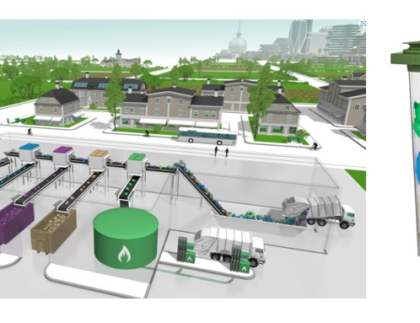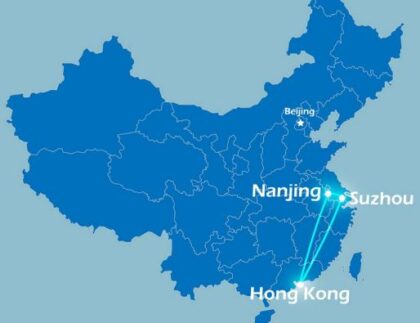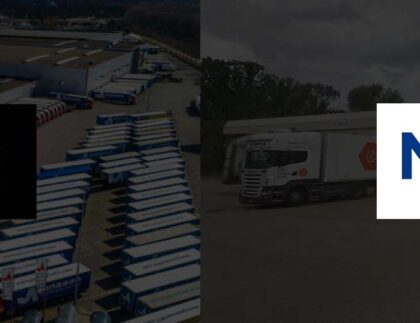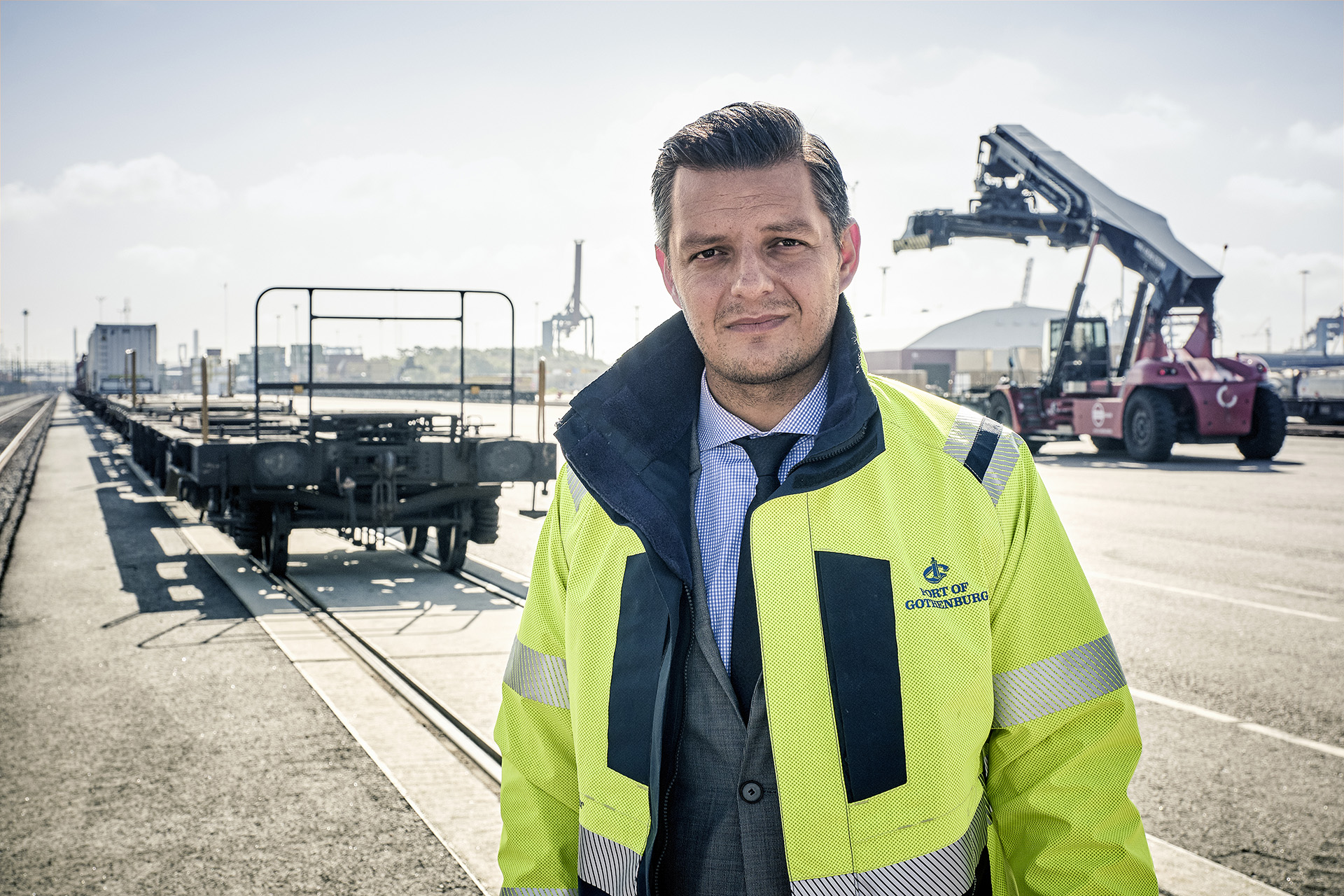
The largest port in the Nordic region
The Port of Gothenburg recently celebrated 400 years of service to Scandinavian industry. CEO Elvir Dzanic has been with the port a slightly shorter period of time, but is determined to keep it going for another 400 years, as well as to take it to the next level through digital and sustainable transformation. We had a chat with Mr. Dzanic to catch up on what’s going on at the Port of Gothenburg right now.
Could you please tell us a little bit about the history of the Port of Gothenburg?
The port turned 400 years in 2020 and has served as Scandinavia’s backbone in terms of trade with the rest of the world ever since. Sweden and Scandinavia would not have been as prosperous and internationally imprinted as it is today without our port’s long history of giving Scandinavia access to the world, and conversely, to give the rest of the world access to Scandinavia. This is something that gives pride to all “Gothenburgians”, myself included.
So where does the port stand today?
Well, we are basically doing the same thing today as we did 400 years ago. Our main purpose is still to be the guarantor for Scandinavian industry’s access to the world. But at the same time, the world has changed, everything is different. Our job is to adapt, to serve our customers and to offer innovative, effective and sustainable solutions to their needs. Today we have grown in to a modern, innovative port at the forefront of sustainable development in shipping and logistics. We are a unique port in Scandinavia, in many ways. We are the biggest port by far, with the widest lining network and the only port to offer direct traffic to both the Americas and to Asia every week, for example.
How does the ports’ role fit into the current and future society?
We try to be a natural part of it and also an agent to shape it. Global trade is necessary for business and people to prosper, and it has to be done in a sustainable fashion. The transport sector has a huge part to play in the planets sustainable development, and the industry needs to work together and take responsibility.
Many of us are all concerned about the environment, and we often tend to think about emissions in connection with transports. How is the Port of Gothenburg contributing to the environment?
We have loads of emission reducing efforts planned, in progress and in the books. The Port Authority and the port terminals are climate neutral already today, mainly due to a port-wide switch to fossile free and electrified terminal equipment and vehicles, which we are very happy about. Our main focus today and going forward is reducing transport emissions to and from the port, both on land and at sea.
How?
We are currently working together with Volvo, Scania and Stena Line to accelerate the transition to fossile free trucks using the port. We are in the process of building a fossil free, port wide electric and hydrogen gas infrastructure, as well as giving green priority to fossil free trucks in our terminals. On the seaside we are working on becoming the primary bunkering hub in Europe for alternative fuels, including methanol, LBG, electricity and other techniques. I could go on and on, but these are some of the ongoing projects now.
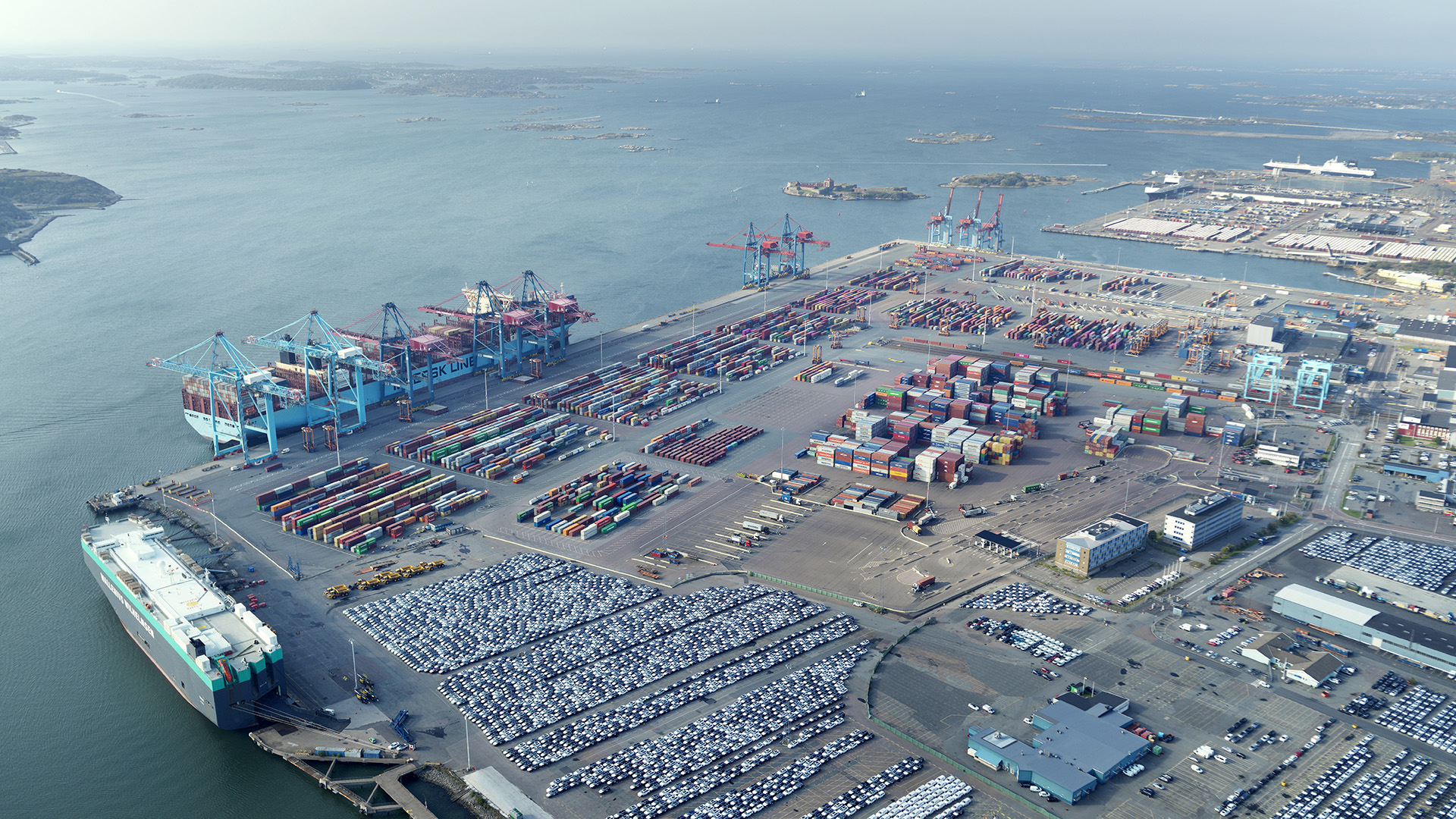
One of your key goals is within digitalization, can you please expand on digitalization and what it means to me as a customer?
Digitalization in itself is pointless unless it adds value to our customers, so we are working towards making customers lives easier and their business more cost effective, and making port connected operations throughout the logistics chain more efficient and transparent through digitalization. One key project we just launched is “Allberth”, a berth planning tool that shortens the approach- and mooring time for ships at the port through AI and machine learning, making port calls more predictable and quicker. Just-in-time calls are also more sustainable as less fuel is needed with a more streamlined, digitally supported ship call process.
Sweden is a rather long stretched country with a wide range of cities and production facilities located all over the country. How can the Port of Gothenburg assist me to transport my cargo to the hinterland?
The port of Gothenburg has a highly developed and reliable railway system called Railport Scandinavia, reaching upwards of 30 destinations in Sweden and Scandinavia every day. About 60% of the port’s container goods is distributed directly to and from the port by rail.
Finally, before we let you go, what are the challenges you foresee in the shipping market and how is the Port of Gothenburg preparing itself to tackle these challenges?
The supply chain has been under extreme pressure the last two years, much in the aftermath of the Covid-19 pandemic resulting in various challenges when it comes to container equipment availability, bottle necks along certain routes, reduced schedule reliability, port congestions, shortage of truck drivers, increased fuel costs, etc. The list goes on, but these are all serious topics that need to be addressed to get us back on track. Actually, we’re trying to turn these challenges into opportunities and much of the work and investments we’ve done and are continuing to put in place will gear us to be ready to tackle these topics more efficiently. But the environmental tasks ahead in terms of more sustainable fuels and cutting emissions is definitely a huge challenge that needs to be taken very seriously.
Facts:
The Port of Gothenburg is the largest port in the Nordic region. 30 per cent of Swedish foreign trade passes through the Port of Gothenburg, including over half of the container traffic.
The Port of Gothenburg is the only port in Sweden with the capacity to receive the world’s largest container vessels and has the broadest range of shipping routes within and outside Europe. Including weekly direct services to Asia and America. Some 30 rail shuttles depart each day, giving companies throughout Sweden and Norway a direct, environmentally smart link to the Port of Gothenburg and overseas markets. The Port of Gothenburg is a full-service port with terminals for containers, energy products, vehicles, ro-ro and passengers.




